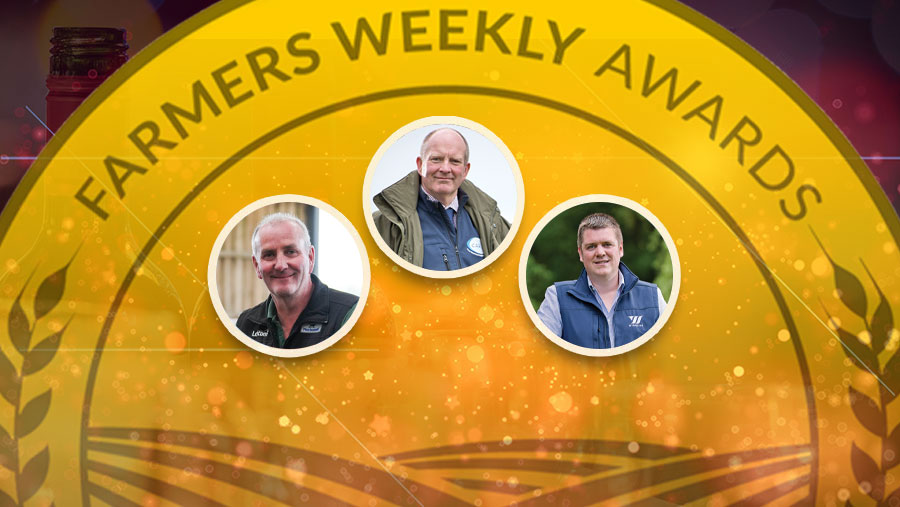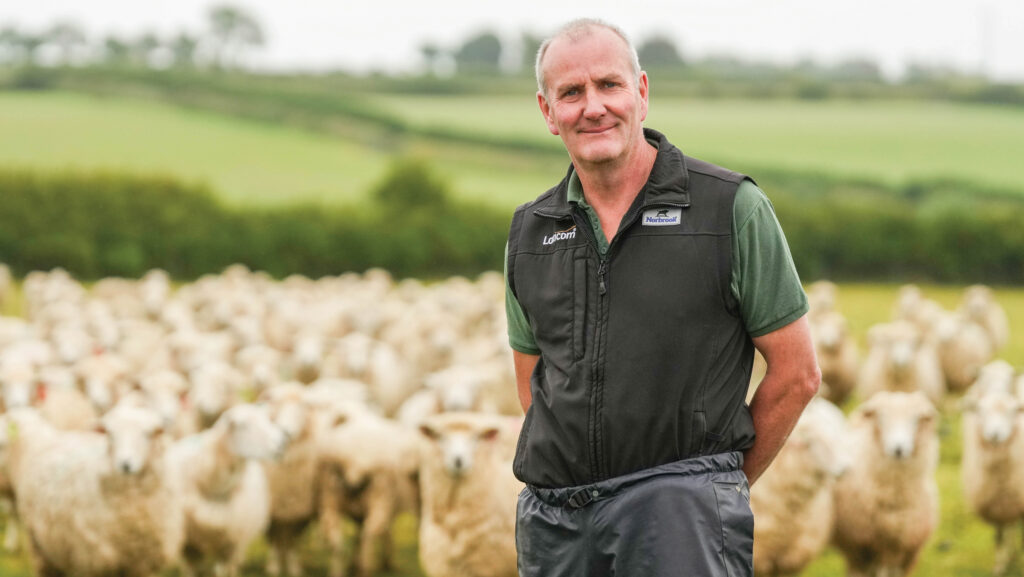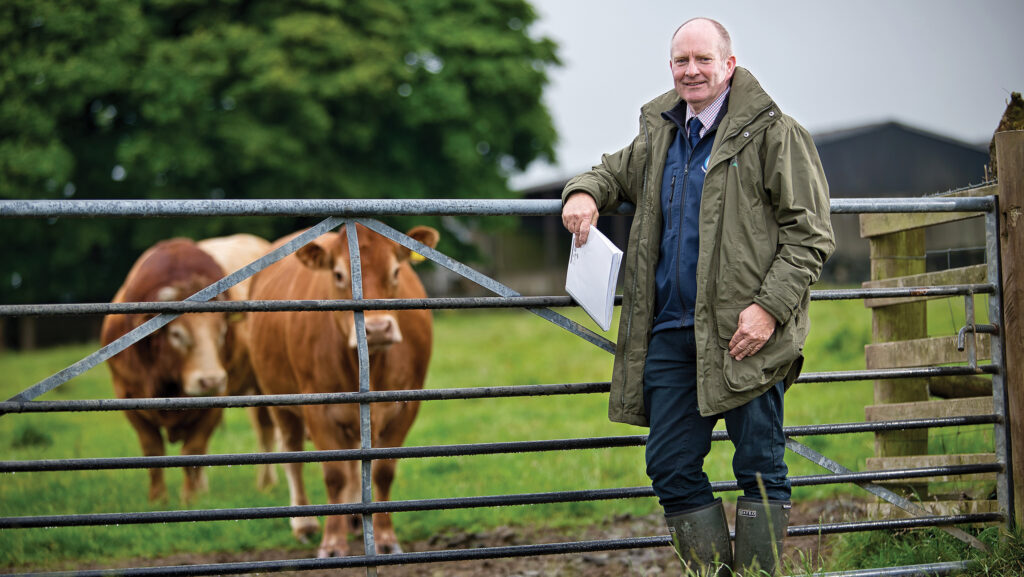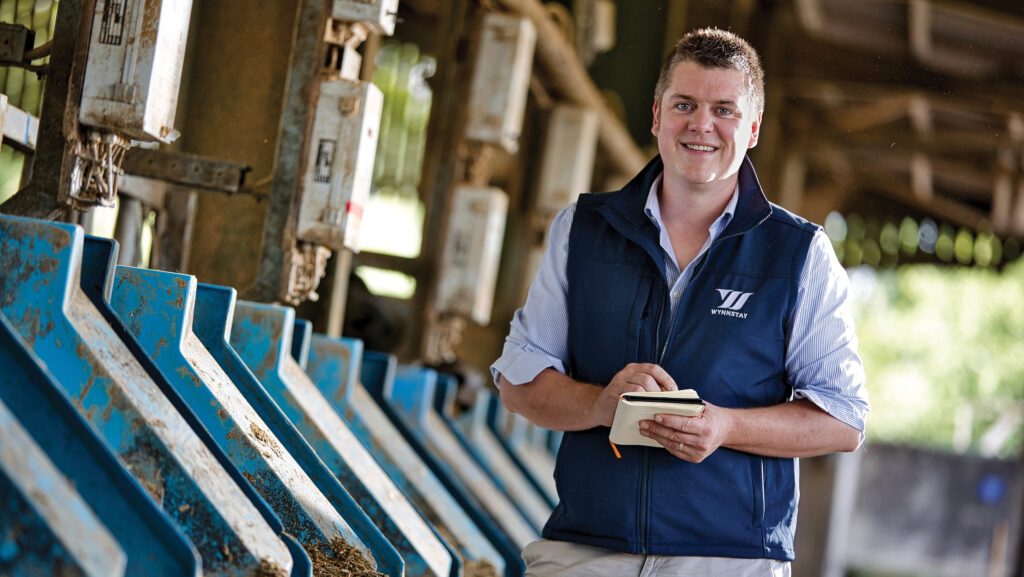Farmers Weekly Awards 2024: Livestock Adviser of the Year finalists

Worm resilience, a beef-to-dairy switch and forage use in cow diets are the three different focus areas of our finalists.
Finalists
- Tim Bebbington, Castle Veterinary Group, Cornwall
- Jonathan Crimes, Cara Wales, Dyfed
- David Howard, Wynnstay, Powys
The judges
Verity Richards Verity is the NFU’s chief dairy adviser, working closely with national dairy boards on issues such as supply chains, exports and farm resilience.
Sara Pedersen FW’s 2023 Livestock Adviser of the Year, Sara is based in south Wales and is a specialist veterinary consultant focused on cow welfare and reducing cattle lameness.
David Jones David contributes to Farmers Weekly on a number of topics covering recent developments in both arable and livestock farming.
Tim Bebbington, Castle Veterinary Group, Cornwall

Tim Bebbington © Emily Fleur
West Country vet Tim Bebbington has helped Matt and Pip Smith breed a sheep flock more resilient to parasitic worms and so cut anthelmintics use by 80% over five years.
He has guided the Cornish farm towards using zero wormers on its 1,200 ewes with only selective use on lambs, helped by breeding for genetic resilience allied to good rotational grazing.
Moving towards resilience, or tolerance, to worms in the New Zealand Romney flock means the farm has not suffered the lower growth rates that could have come with aiming for worm resistance, and avoided the risk of worms evolving to counter this resistance.
Tim started advising the farm in north-east Cornwall some six years ago as it aimed for resilience, using herbal leys to produce a flock that lambs at 170-180%. Three-quarters of its progeny is sold as breeding stock.
“Six years ago, we looked to bring in worm resilience into the farm’s flock, and to look at how to get there quickly by importing sheep genetics from New Zealand,” he says.
Technical knowledge
Tim explains that resilient sheep do not prevent worms establishing, but they show good weight gains, whereas resistance limits worm production, but can give lower growth rates.
Breeding for resilience has seen no ewe treated with a wormer for five years, while ewe lambs only have one worm drench and just 20-30% of male lambs are wormed.
This approach is reinforced by good rotational grazing, as moving sheep often can limit infection compared with the hard grazing of worm-infected pastures.
The use of herbal leys also helps, as worms struggle to navigate to the top of the sward, while sainfoin, plantain and chicory show anthelmintic properties, which can limit worm build-up.
Matt and Pip’s sheep make up only one of Tim’s 20 elite flocks across east Cornwall and west Devon where wormer use has been cut by 60-70% over the past five years.
Environmental credentials
Tim started his vet career focusing on dairy clients, but soon realised there was scope to develop health plans for sheep and beef producers along the lines of those developed for dairy farms.
He saw that sheep farmers would need just one-fifth of the worm drenches they were using by exploiting genetics and good grass rotations without affecting growth rates.
Tim has also focused on how sheep farmers can cope without direct subsidies. He has looked to gain funding to encourage the use of vaccines to control ticks on Dartmoor and encourage dung beetles, which break down dung and so dry out and kill worm eggs.
Client relationship
Matt and Pip, who farm at Trefranck Farm, near Launcester, say Tim has been key in pushing their flock towards worm resilience.
Matt, originally from New Zealand, says his home country was years ahead in the move towards resilience, and Tim has helped them move in that direction.
“The biggest thing Tim has brought is his support for being progressive, and to become very involved in our resilience programme on the farm,” says Matt.
Pip adds that Tim’s help has been essential in the farm’s drive for worm resilience, and his friendly advice and being always available has enabled the farm to achieve many of its objectives. His help has also been invaluable in the success of the red deer enterprise.
In numbers
- 35 years working as a vet
- 30 years with Castle Veterinary Group
- 20 elite sheep flocks
- 11 vets in the practice
Farm facts
Matt and Pip Smith, Trefranck Farm, St Clether, Launceston, Cornwall
- 190ha grassland on free-draining loam and peaty soils, stretching up to an altitude of 270m
- Stocking 1,200 New Zealand Romney ewes and 170 red deer
- 200 fattening cattle – Angus/Hereford crossed with dairy breeds
The judges liked
- Very farmer-oriented and understands the needs and challenges of many and varied livestock clients.
- Looking ahead for the next challenges that his clients will face and putting steps in place to address these issues.
- Brings vets and farmers together in the wider region to tackle animal health and welfare issues.
The judges say
“Tim is a vet and adviser who takes an interest in all aspects of his clients’ businesses with a supportive, community focus”
Jonathan Crimes, Cara Wales, Dyfed

© Richard Stanton
Jonathan Crimes has guided a Welsh family farm to give up dairying and turn to beef cattle in order to chart a bright future for the farm and keep all the family involved.
As senior consultant with advisory group Cara Wales, Jonathan set out a two- to three-year plan for Gwyndaf Davies to move to beef finishing and so enthuse one of his sons to stay in day-to-day farming.
Using a calf-buying scheme, the farm is finishing cattle with home-grown feed containing grass silage, lucerne and rolled barley. Half of the cattle are Angus crosses, which are finished at a premium.
Jonathan helped Gwyndaf overcome the stigma of giving up on milking cows and helped him and his family towards a promising future for the south-west Wales farm.
“We helped with the transition from dairying to beef over three years, emphasising that cashflow would be more acute, and producing lots of data to make sure we were getting good liveweight gains,” says Jonathan.
Technical knowledge
The biggest challenge during the transition from 2017 to 2020 was getting beef numbers up, and they turned to meat processor ABP’s Blade GameChanger scheme to provide weaned calves.
This source of Holstein-Angus calves makes up 50% of the 300-strong herd, with a guaranteed finish price at a small premium for Sainsbury’s Taste the Difference range. The rest of the calves come through a dealer.
“The nutritional philosophy was to feed a reasonable level of protein at 14-15% up to 12-14 months to build up the animal, and then cut back to 12-13% for finishing,” he says.
Great focus was put on measuring liveweight gain and achieving 1kg/day. When weight gain did fall, he quickly realised wholecrop barley was giving too much fibre and not enough starch, and adjusted the ration.
Environmental credentials
The exit from dairying has seen a better crop rotation with more maize grown – a majority is grown on contract for a neighbouring dairy farmer – while maintaining an area of woodland.
The big challenge going forward will be continuing to comply with nitrate vulnerable zone legislation. The whole of Wales is in this classification, which limits livestock numbers and sets storage capacity for slurry.
As Wales edges towards its Sustainable Farming Scheme to replace direct subsidies, the farm aims to use more rotational grass and herbal leys and looks to work closely with the local community.
Client relationship
Jonathan has worked with Gwyndaf for 24 years, even before he helped set up Cara Wales. Building a strong relationship was helped by Jonathan farming himself near Lampeter with 240 beef cattle and 150 sheep.
His advice encouraged Gwndaf’s son Dion to become enthused with the farm, where previously he was not keen to continue dairying. Dion’s twin brother and his sister have also shown interest in the business.
“Jonathan has been a rock. He was very supportive in overcoming the stigma of leaving dairying, helping with bank manager conversations and key to my three children having involvement in the farm,” says Gwyndaf.
The future of the farm and the family’s involvement in farming looks much more secure thanks largely to Jonathan’s help over recent years, Gwyndaf adds.
In numbers
- 19 years working as a founding partner at Cara
- 70 direct clients across South Wales
- 9 Cara advisers in a total staff of 14
800-850 group clients for Cara across South Wales
Farm facts
Gwyndaf Davies, Trewitial Fawr, Tremain, Cardigan, Dyfed
-
- 134ha, including 24ha cereals and 32ha maize
- Cereal crops include spring and winter barley, and winter oats
- The remainder is grassland for grazing 300 finishing cattle
The judges liked
- Looks at different options to create a stable financial business as well as all the factors affecting the family, the future and the farmer’s objectives
- Works collaboratively with all livestock clients to support them through sometimes tough decisions
- Adapts approach depending on a client’s needs and has a deep understanding of farms as well as the farmer
The judges say
“Jonathan is a consultant who not only understands his clients’ businesses, but also recognises the wider needs, adapting his advice on farm circumstances and industry background”
David Howard, Wynnstay, Powys

David Howard © Richard Stanton
High forage-feeding rates are being achieved at a big Shropshire dairy with the help of consultant David Howard, putting the herd on the path to more sustainable milk production.
The 400-strong dairy herd at Harper Adams University is on a 65% forage diet, which is particularly impressive for an indoor herd, as the university aims for net zero by 2030.
David, as head of dairy services at advisory and supplier group Wynnstay, has been working with the herd since the start of 2023. Since then he has built on the university’s sustainability credentials, which include going soya-free five to six years ago.
He has helped reach this high percentage of forage, on a dry matter basis, using a mix of grass, maize and lucerne silage, with the majority coming from maize, but with lucerne giving a useful protein boost.
“We are growing the forage mix up to 65% and limiting concentrate use as we need every herd to be making a profit in the dairy sector,” he says.
Technical knowledge
The forage silage proportion is made up of 63% maize and the rest from grass and lucerne. The latter comes in at 19% protein, thereby limiting any protein supplementation.
David says that the average UK dairy herd is producing 3,000 litres a cow a year of milk from forage, but the Harper herd is touching 6,000 litres. This is especially good as the herd is indoors with no access to fresh grass.
He has also guided the herd towards three-times-a-day milking from April 2024, which has pushed yields up by 2,500 litres to 11,400 litres a cow a year, as part of his forage-for-profit approach to improve sustainability.
He also spotted a fall in yields during a hot spell in early September 2023. It was not linked to a drop in overall feed consumption, but rather that the cows were eating in the cooler early mornings and late afternoons instead of throughout the day to give the best milk output.
“This prompted us to look to cool the cows and install fans, and make sure we were providing plenty of fresh water,” he says.
Environmental credentials
Out of David’s 26 dairy clients, about half have now eliminated soya from the diet for sustainability reasons. “The fastest thing you can do to reduce carbon is cut soya,” he says.
The university has set a target for the dairy to go net zero by 2030, so David is already making progress with protein-rich home-grown lucerne, and the farm is to renew its efforts to grow soya.
The biggest factor towards this aim after cutting out soya, has been the increased use of forage, he adds.
Client relationship
David has been working with Harper ruminant manager Kate Robinson for 18 months, focusing on nutrition to improve production and efficiency and helping with teaching at the university.
Kate says David has been instrumental in pushing up forage use and overcoming heat stress, which was leading to the gorging of feed and restricting milk output.
“David can operate commercially in the academic environment of the university, acting as another manager for us. The next aim will be for David to help us move towards the goal of net zero by 2030,” she says.
David has been key in improving the productivity of the herd, getting the nutrition spot on and making sure the cows are healthy and happy. His enthusiasm is infectious, fuelling positive results across the workforce.
In numbers
- 18 years as an adviser
- 4 years with Wynnstay
- 26 dairy clients
- 10 ruminant nutritionists in group
Farm facts
Kate Robinson, ruminant manager at Harper Adams University, Newport, Shropshire
-
- 400 milking Holsteins in an indoor system
- Averaging 11,600 litres a cow a year
- 50 milking cows in a robotic system
- 130 finishing cattle with 600 sheep
The judges liked
- Understanding of animal nutritional needs across individual farms and ability to take advantage of contractual bonuses
- Involved in innovation on clients’ farms and always looking to address future challenges
- Works with the whole team, from academics to those looking after herds on a day-to-day basis
The judges say
“David is a knowledgeable nutritionalist using all the data available to help drive decision making on the farm, while also ensuring all the team are involved”
 A word from our sponsor
A word from our sponsor
“Leading farmers work with professional advisers to complement their own personal knowledge and expertise. Manitou is delighted to sponsor this category in 2024”
Mark Ormond, managing director, Manitou UK
